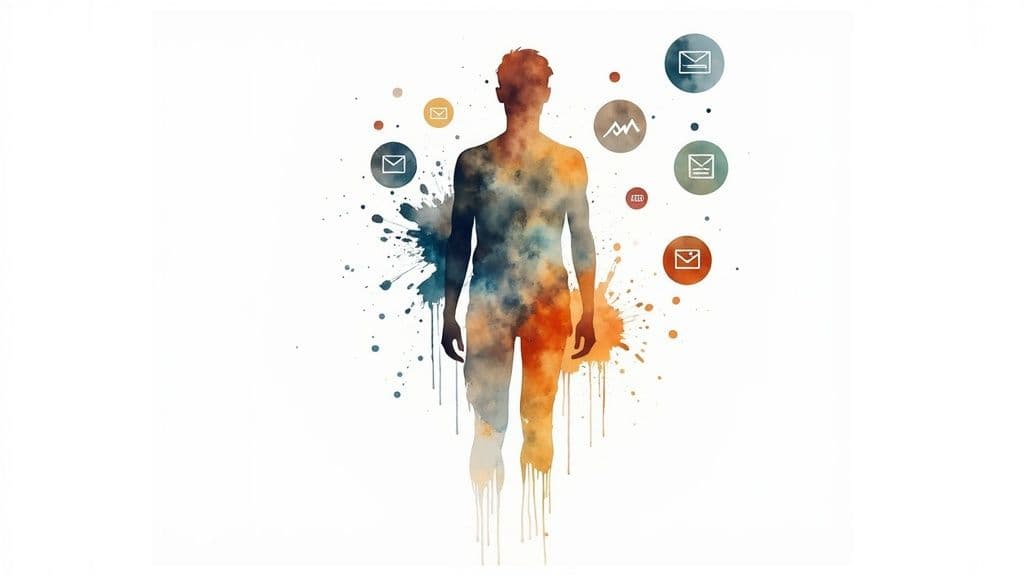Let’s face it: most leaders spend the start of their day fighting an inbox and juggling calendar conflicts instead of doing strategic work. An AI executive assistant automates routine admin—scheduling, email triage, meeting prep, and task follow-up—so you can focus on high-impact decisions and lead with clarity.
July 27, 2025 (4mo ago) — last updated December 10, 2025 (9d ago)
AI Executive Assistant: Reclaim Time & Boost Productivity
Discover how an AI executive assistant automates scheduling, email triage, and task management to give leaders back hours for strategic work.
← Back to blog
AI Executive Assistant: Reclaim Time & Boost Productivity
Summary: Discover how an AI executive assistant automates scheduling, email triage, and task management to give leaders back hours for strategic work.
Introduction
Let’s face it: most leaders spend the start of their day fighting an inbox and juggling calendar conflicts instead of doing strategic work. An AI executive assistant automates routine admin—scheduling, email triage, meeting prep, and task follow-up—so you can focus on high-impact decisions and lead with clarity.
The Real Cost of Doing It All Yourself
The issue isn’t drive; it’s bandwidth. Time spent on admin tasks is time taken from growth, coaching, and strategy. That manual load creates a bottleneck that slows your team and reduces your capacity for high-value work.
The fallout includes:
- Decision fatigue. Repeated small decisions drain the mental energy needed for big-picture thinking.
- Missed opportunities. Time spent on calendar logistics is time not spent building relationships or exploring growth.
- Lost strategic headspace. Constantly reacting makes it hard to lead proactively.
The real cost isn’t only hours lost. It’s the cognitive load on leaders. An AI executive assistant is designed to lift that burden and clear the way for effective leadership.
A Smarter Way to Work
Imagine starting your day to find a prioritized agenda, a calendar that respects your deep work blocks, and urgent items already flagged. An AI executive assistant becomes a digital partner that runs in the background, handling repetitive tasks so your work shifts from reactive to focused and proactive.
How an AI Assistant Actually Works

Think of an AI assistant as a fast-learning team member. It learns your preferences and habits using machine learning and understands conversational commands through natural language processing. That combination lets it manage context, intent, and personal preferences—far beyond simple reminders.
Learning Your Workflow
When you connect the assistant to email, calendar, and project tools, it finds patterns—who you reply to first, which meetings you protect, and which tasks you defer. As you accept or adjust its suggestions, it gets better at anticipating what you need and taking proactive steps on your behalf.
- Getting started: Connect core tools—email, calendar, project software.
- Finding patterns: The AI analyzes history to learn preferences and priorities.
- Taking proactive steps: It suggests or implements changes based on what it learns.
The more you use the assistant, the more it feels like an extension of you.
Speaking Your Language
Natural language processing lets you tell the assistant what you want in plain English, for example: “Find a 45-minute slot with Sarah next week for the Q3 budget, make it a video call.” The AI extracts the who, what, when, and how, checks calendars, and completes the booking.
Core Capabilities That Redefine Productivity

An AI executive assistant does more than track tasks. It connects scheduling, communications, and task systems to remove the logistical friction that steals time from leaders.
Intelligent Calendar Management
The assistant doesn’t just block time. It negotiates availability, protects deep work windows, and resolves conflicts across time zones. Want a 60-minute kickoff for a 10-person project? Issue one command and let the AI find the optimal slot, create the event, and send invites.
Automated Email Triage
An AI assistant sorts, summarizes, and prioritizes messages so you only see what matters now. It learns which senders and topics are urgent and bundles non-urgent updates into a digest you can review in a single session. This reduces interruptions and preserves focus.
Proactive Meeting Preparation
Before a meeting, the assistant compiles participant profiles, relevant documents, and past action items into a concise briefing so you arrive prepared and confident.
Smart Task Management and Delegation
The assistant extracts tasks from email, notes, and conversations, organizes them by priority, and integrates with your project tools so nothing slips through the cracks. This centralization keeps the team aligned and accelerates follow-through.
The global AI assistant market is expected to grow substantially as organizations adopt these capabilities1. Some AI implementations already show meaningful productivity gains in content and operational workflows2.
Real-World Benefits for Busy Leaders
The real value is time and mental clarity. Automating administrative categories can free several hours each week, giving you room for strategy, mentoring, and innovation.
Reclaim Focus and Mental Energy
Handing off low-value, interruptive tasks helps you stay immersed in deep work for longer stretches. Leaders avoid frequent context-switching and preserve the mental bandwidth needed for high-impact decisions.
The market demand for intelligent virtual assistants is rising quickly, reflecting how much companies value these gains34.
Reduce Decision Fatigue
An AI assistant reduces small, repetitive decisions by acting on your learned preferences—filtering emails, suggesting when to accept meetings, and prioritizing tasks—so you can reserve willpower for strategic choices.
Improve Team Efficiency and Alignment
When scheduling and communications are automated, teams move faster. Faster turnaround, less friction, and clearer priorities help teams spend more time on outcomes and less on coordination.
Manual Workflow vs AI-Augmented Workflow
| Task | Traditional Manual Process | AI Executive Assistant Process |
|---|---|---|
| Scheduling a team meeting | Multiple emails, polls, and manual invites (30–60 mins) | One command; AI finds time, books meeting, sends invites (<1 min) |
| Preparing for a client call | Manually gather emails, notes, CRM data (20–30 mins) | AI compiles a briefing with history and documents (0 mins) |
| Daily email management | Constantly check and triage inbox (60+ mins/day) | AI triages, summarizes, and drafts routine replies (15–20 mins/day) |
How to Choose the Right AI Assistant

Choosing the right solution is about fit, not hype. Start by identifying your biggest pain points—email overload, chaotic calendar, or project follow-up—and find an assistant that addresses those directly.
Integration Capabilities
Priority number one is deep integrations. The assistant must connect natively to your email, calendar, project tools, and team chat so it can act across systems without creating new silos.
Look for connectors to:
- Gmail or Outlook
- Google Calendar or Microsoft 365
- Asana, Trello, or Jira
- Slack or Microsoft Teams
A strong integration layer lets the AI convert email into tasks, block time from messages, and pull deadlines into your daily plan.
Security and Confidentiality
Security is non-negotiable. Ask providers about encryption in transit and at rest, access controls, and privacy policies. Verify compliance credentials before you connect sensitive data5.
Usability and Learning Curve
A powerful tool is useless if it’s hard to use. Choose an assistant with a simple interface and plain-English commands. The easier it is to delegate, the faster you’ll see value.
Common Questions About AI Assistants
Is this meant to replace my human assistant?
No. The goal is partnership. An AI assistant handles high-volume, repetitive work so a human assistant can focus on strategic tasks that need emotional intelligence and relationship management.
How long does onboarding take?
Onboarding usually starts by connecting email and calendar and setting a few preferences. The assistant adds value immediately and becomes more accurate over a few weeks as it learns your patterns.
How secure is my data?
Reputable platforms use strong encryption and strict access controls. Always request documentation on encryption, data handling, and compliance before you connect confidential systems5.
Ready to reclaim your focus and offload tedious tasks? Fluidwave combines intelligent automation with skilled human assistants, giving you the best of both worlds. Delegate tasks with a single click and pay only for results. Get started with Fluidwave today.
Frequently Asked Questions
Can an AI assistant handle cross-time-zone scheduling reliably?
Yes. With calendar access for all participants, an AI assistant can evaluate availability across time zones, propose optimal slots, and create meeting invites with correct local times.
Will the AI learn my personal preferences?
Yes. As you accept, adjust, or reject suggestions, the assistant adapts to your routines, meeting preferences, and communication priorities.
What’s the best way to start using an AI assistant?
Begin by connecting email and calendar, define a few simple rules, and let the assistant start triaging and scheduling. Review its suggestions and correct as needed—this trains it faster.
Focus on What Matters.
Experience lightning-fast task management with AI-powered workflows. Our automation helps busy professionals save 4+ hours weekly.